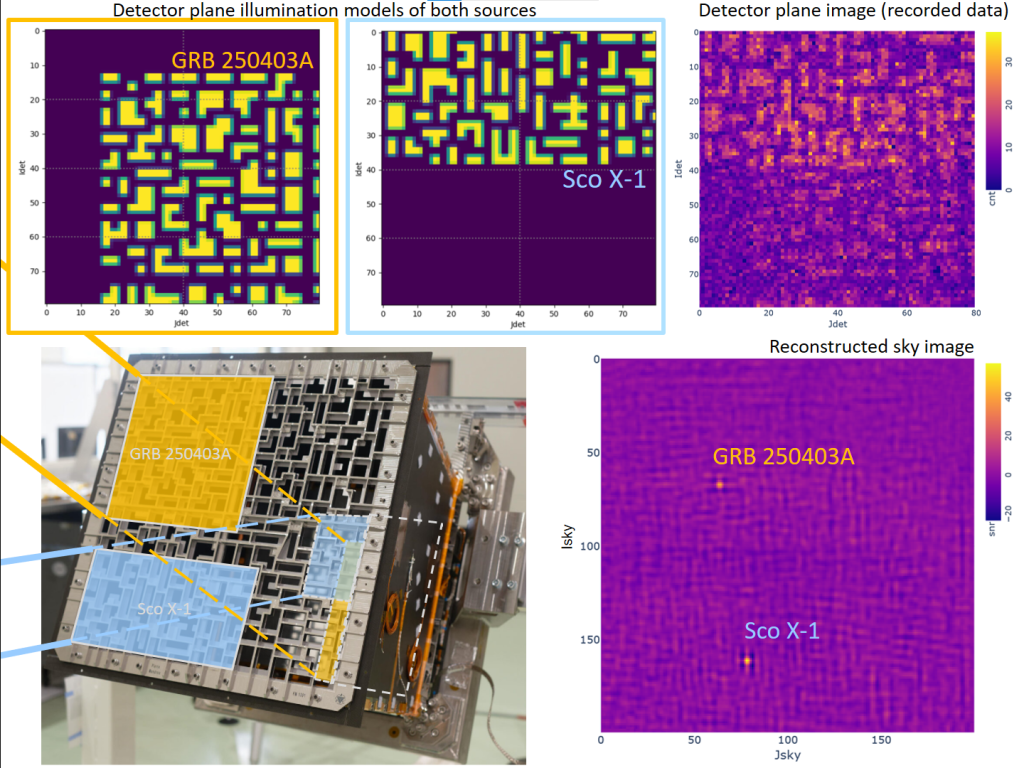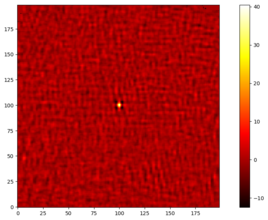GRB 250403A, proof of the phenomenal power of gamma-ray bursts.
On 03 April 2025, at 09:42 UTC, SVOM was revisiting the gamma-ray burst detected the previous day, GRB 250402A. The optical axis of the instruments was pointing in the direction of the Virgo constellation (AD= 13.78° DEC= -5.94°).
Since ECLAIRs has a field of view of 2 steradians (approximately 90 degrees by 90 degrees), several sources were present within it, including Scorpius X-1.

Scorpius X-1, abbreviated Sco X-1, is an X-ray source located in the constellation of Scorpius about 9,000 light-years from Earth. Apart from the Sun, it is the most powerful source of X-rays in the sky. It was discovered by chance in 1962 by a team led by Riccardo Giacconi, using a sounding rocket equipped with an X-ray detector. At that time, Riccardo Giacconi was looking to study X-ray emissions from the Moon. The discovery of this object marked the birth of X-ray astronomy. Riccardo Giacconi was awarded the Nobel Prize in Physics 40 years later, in 2002.
Sco X-1 is likely to be a binary system hosting a neutron star that tears matter from its companion star, forming an accretion disc. The mass of the companion star is only 0.42 solar masses, hence the classification as a low-mass binary system.
In the ECLAIR energy range of 5 to 20 keV, Sco X-1 is therefore the brightest source in the sky. Normally we try to keep this source out of the field of view of ECLAIRS so as not to saturate its detectors. The presence of Sco X-1 in the ECLAIRs field of view disturbs the trigger and significantly reduces the sensitivity of the telescope.
On 03 April 2025, at 15:15 UTC, a flash appeared in the ECLAIRs data, GRB 250403A. This burst lasted around twenty seconds and triggered the SVOM machinery with the emission of a GRB alert, the drafting of a circular (GCN 40026) and the conduct of a ground follow-up campaign. This follow-up campaign resulted in an estimate of the distance of the burst by measuring its redshift. With a redshift equal to 1.847 (GCN 40162), this burst occurred when the universe was only 3.58 billion years old. The photons that reached our detectors travelled for 10.14 billion years.
The image produced by ECLAIRs is very interesting and shows us the power involved in a gamma-ray burst. In Figure 2, at the moment of the flash, we can clearly distinguish the two mark patterns projected by Sco X-1 and GRB 250403A (for more information “play with ECLAIRs“). The two sources are also clearly visible in the deconvolved image with almost the same intensity, except that Sco X1 is in our galaxy and GRB 250403A is at cosmological distances…

Since the universe is expanding, using standard cosmological parameters, we can calculate the luminous distance of GRB 250304A, which is equal to 46.78 billion light-years. If we remember that the distance of Sco X1 is only 9000 light-years, then to impregnate our detector with the same intensity for 20 seconds, GRB 250403A was 26 million million times more intense than the brightest source in the sky in this energy range. That’s amazing !


